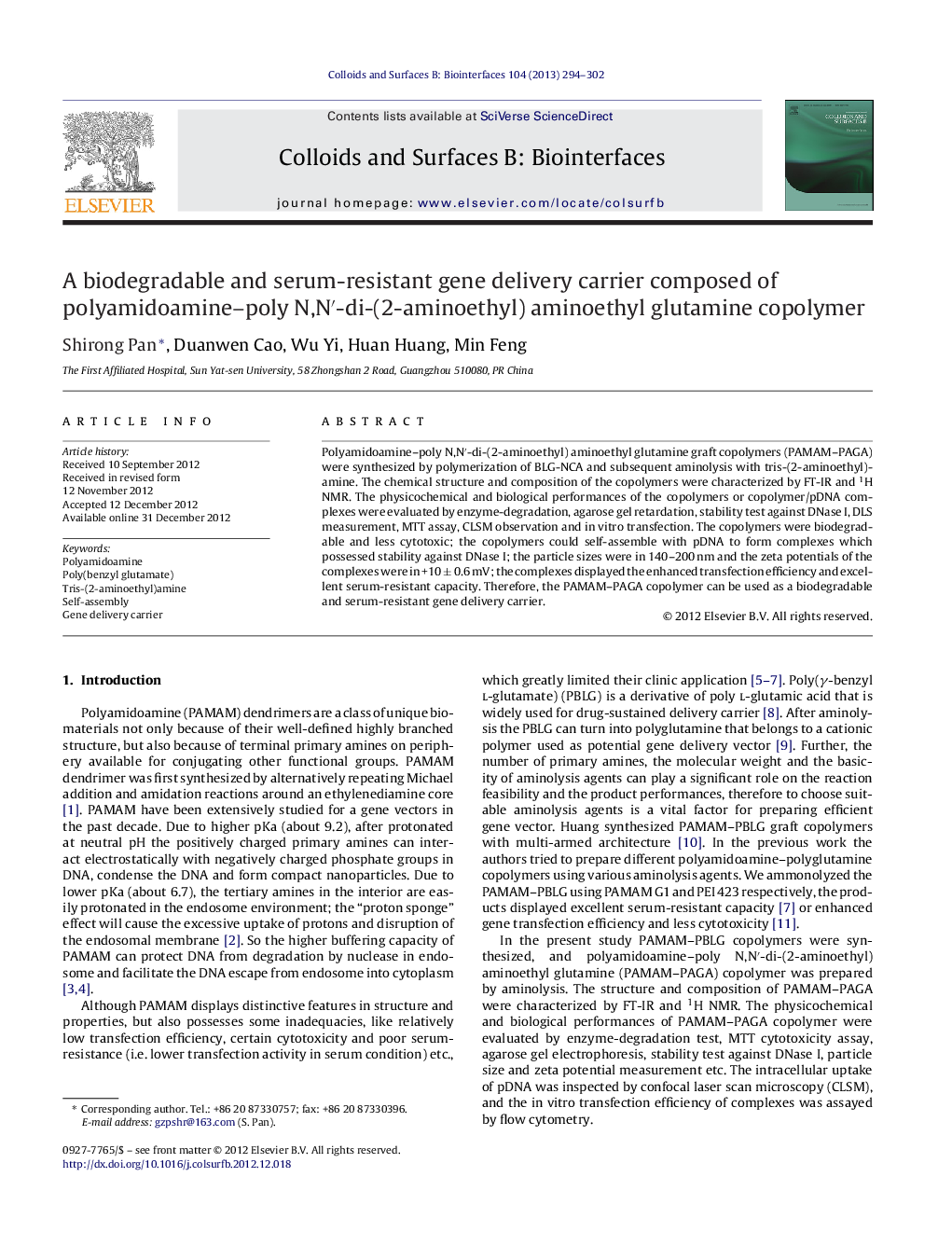| Article ID | Journal | Published Year | Pages | File Type |
|---|---|---|---|---|
| 600061 | Colloids and Surfaces B: Biointerfaces | 2013 | 9 Pages |
Polyamidoamine–poly N,N′-di-(2-aminoethyl) aminoethyl glutamine graft copolymers (PAMAM–PAGA) were synthesized by polymerization of BLG-NCA and subsequent aminolysis with tris-(2-aminoethyl)-amine. The chemical structure and composition of the copolymers were characterized by FT-IR and 1H NMR. The physicochemical and biological performances of the copolymers or copolymer/pDNA complexes were evaluated by enzyme-degradation, agarose gel retardation, stability test against DNase I, DLS measurement, MTT assay, CLSM observation and in vitro transfection. The copolymers were biodegradable and less cytotoxic; the copolymers could self-assemble with pDNA to form complexes which possessed stability against DNase I; the particle sizes were in 140–200 nm and the zeta potentials of the complexes were in +10 ± 0.6 mV; the complexes displayed the enhanced transfection efficiency and excellent serum-resistant capacity. Therefore, the PAMAM–PAGA copolymer can be used as a biodegradable and serum-resistant gene delivery carrier.
Graphical abstractFigure optionsDownload full-size imageDownload as PowerPoint slideHighlights► We prepared PAMAM–PAGA graft copolymers and characterized the copolymer by FT-IR and 1H NMR. ► The copolymer displayed higher biodegradability, less cytotoxicity, strong DNA combining capacity. ► PAMAM–PAGA/pEGFP-C1 complexes were self-assembled in deionized water. ► The complexes showed particle size of 140–200 nm and zeta potential of 10 mV. ► The complexes displayed higher transfection efficiency and excellent serum-resistant capacity.
